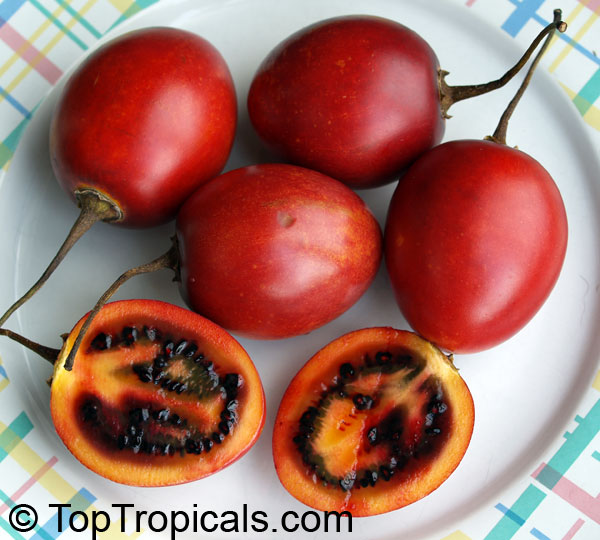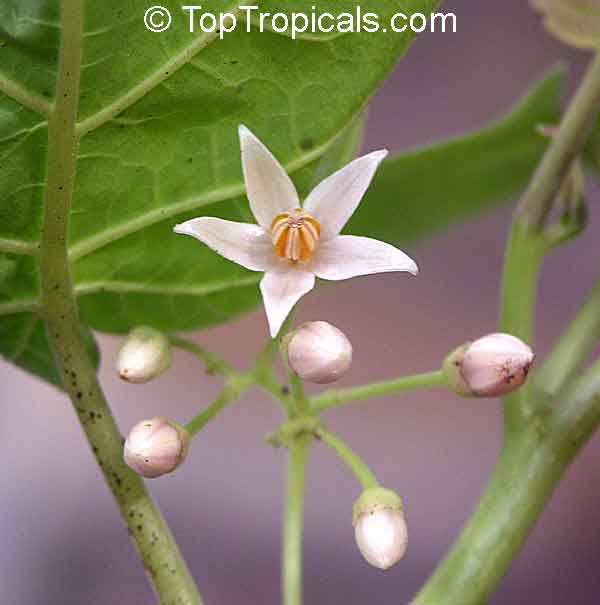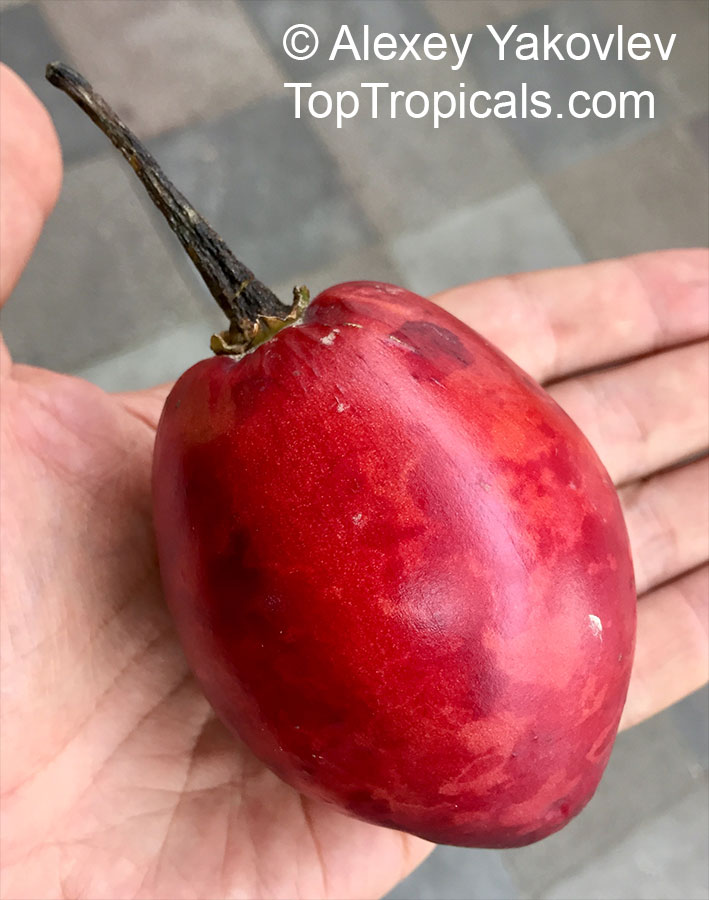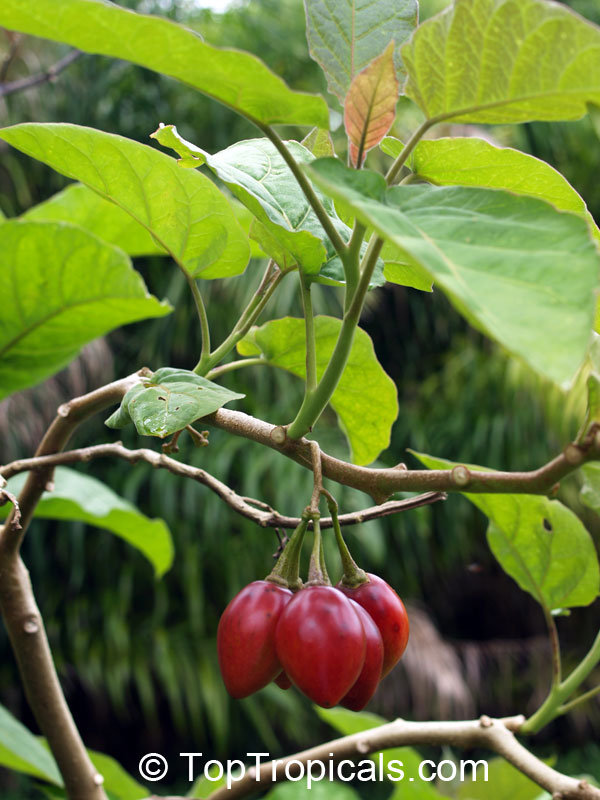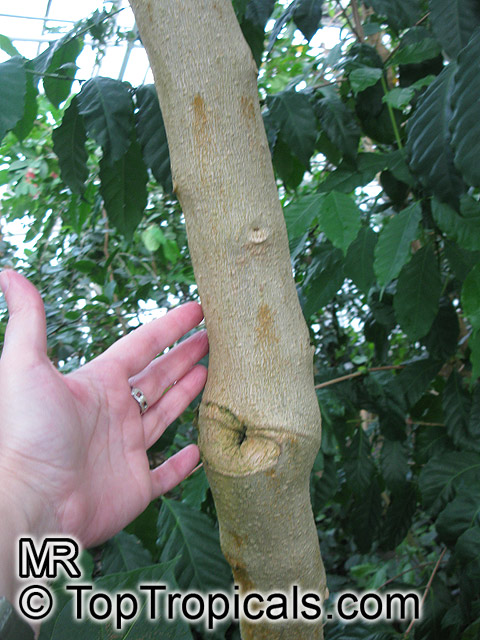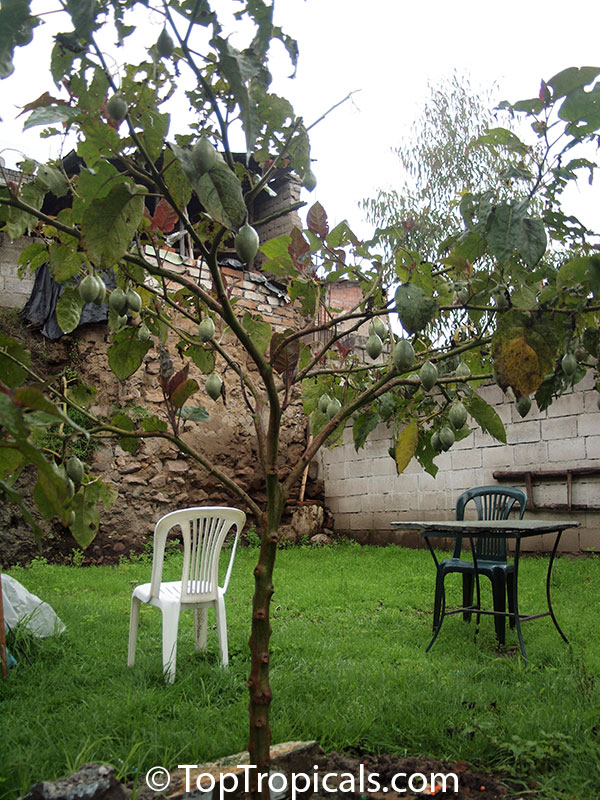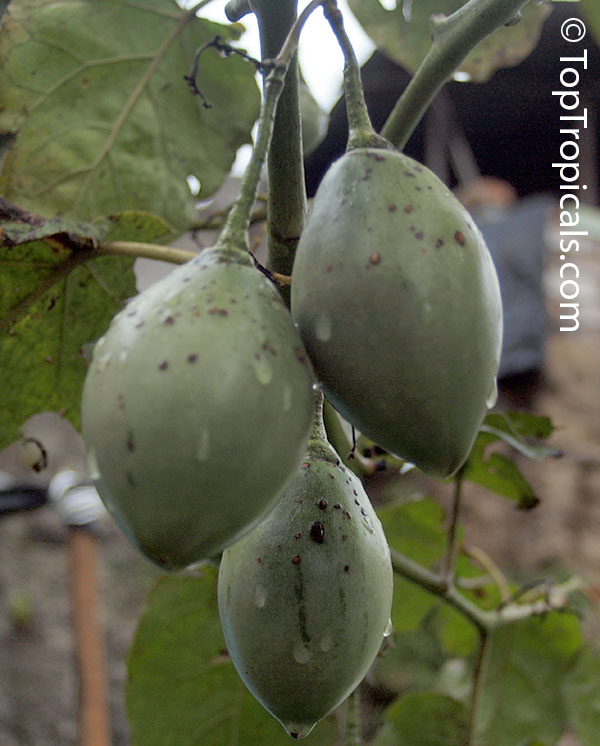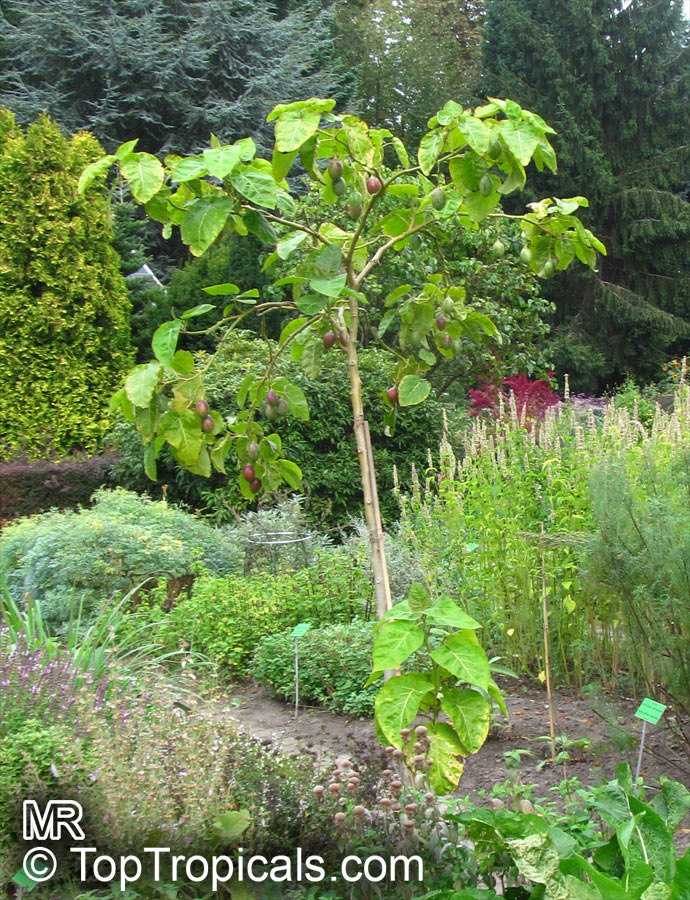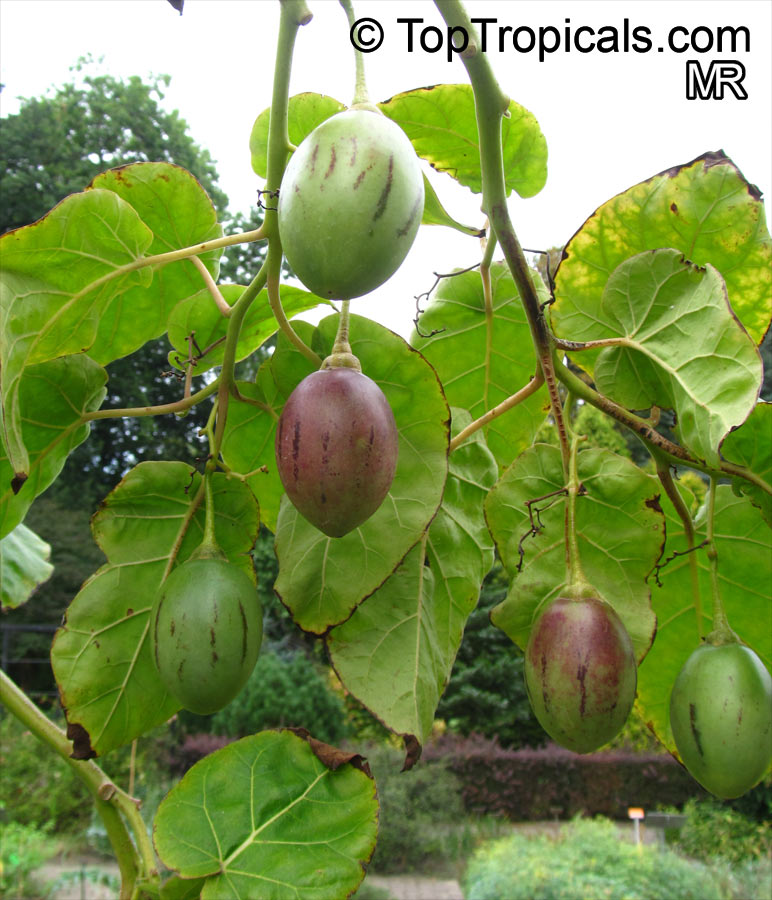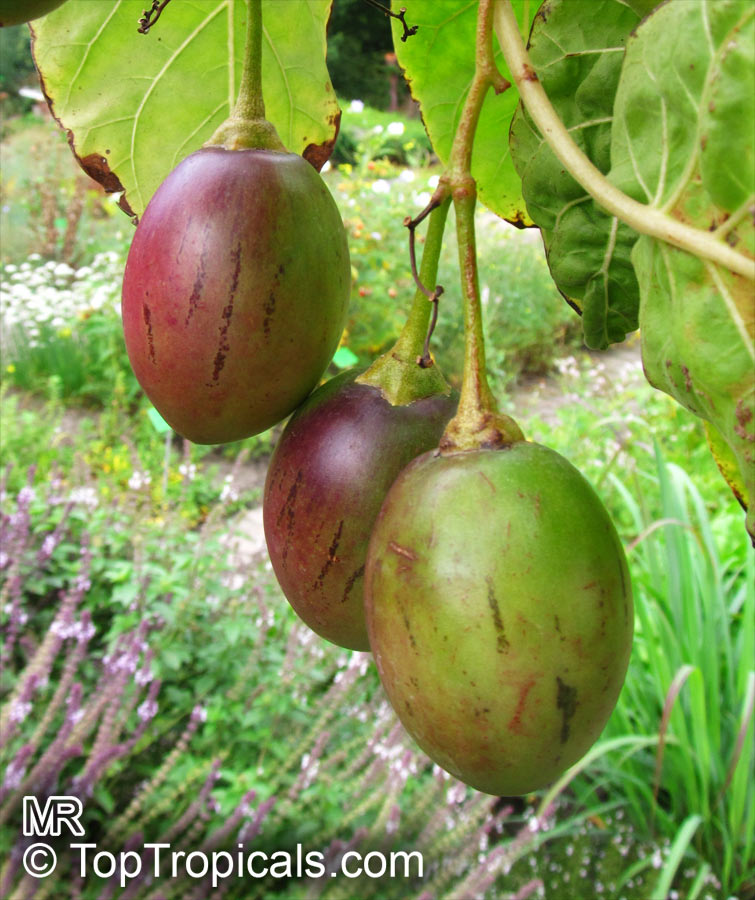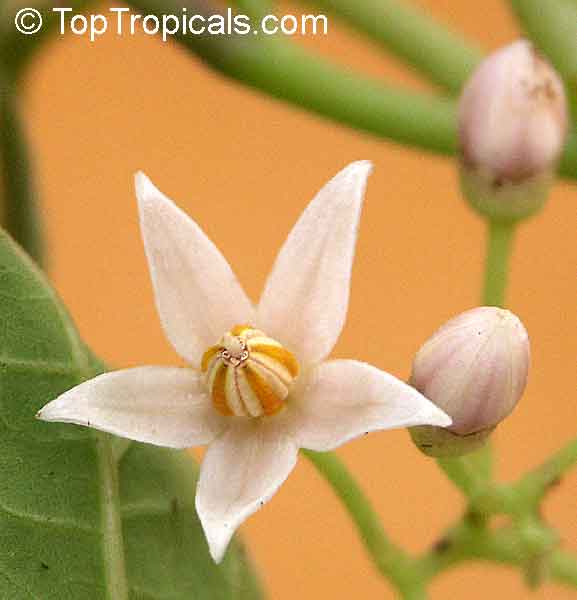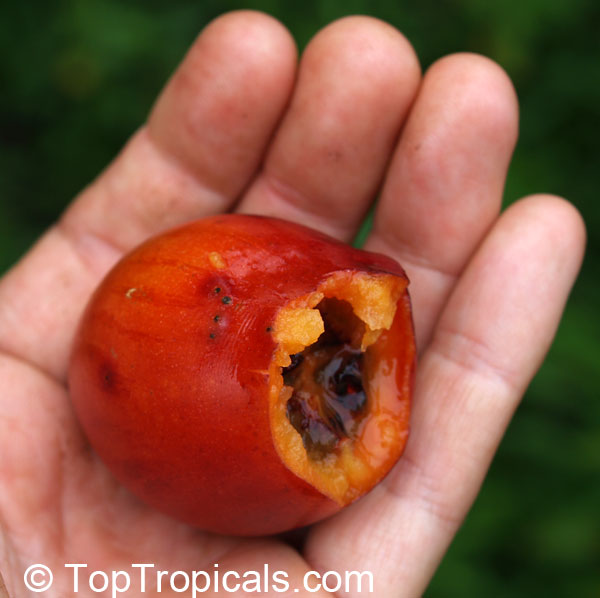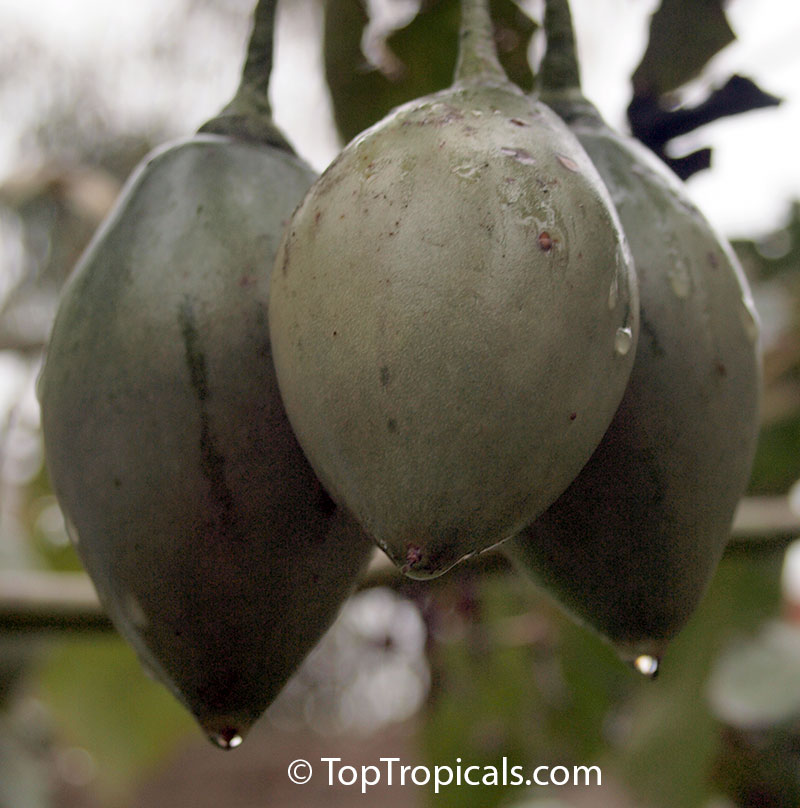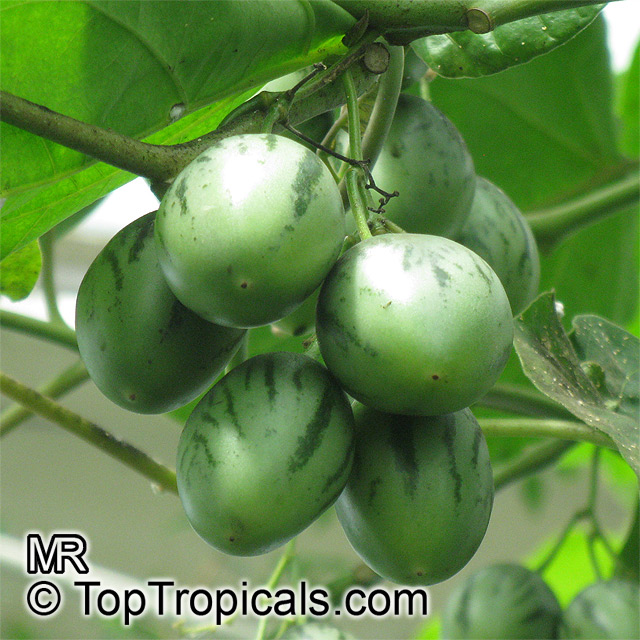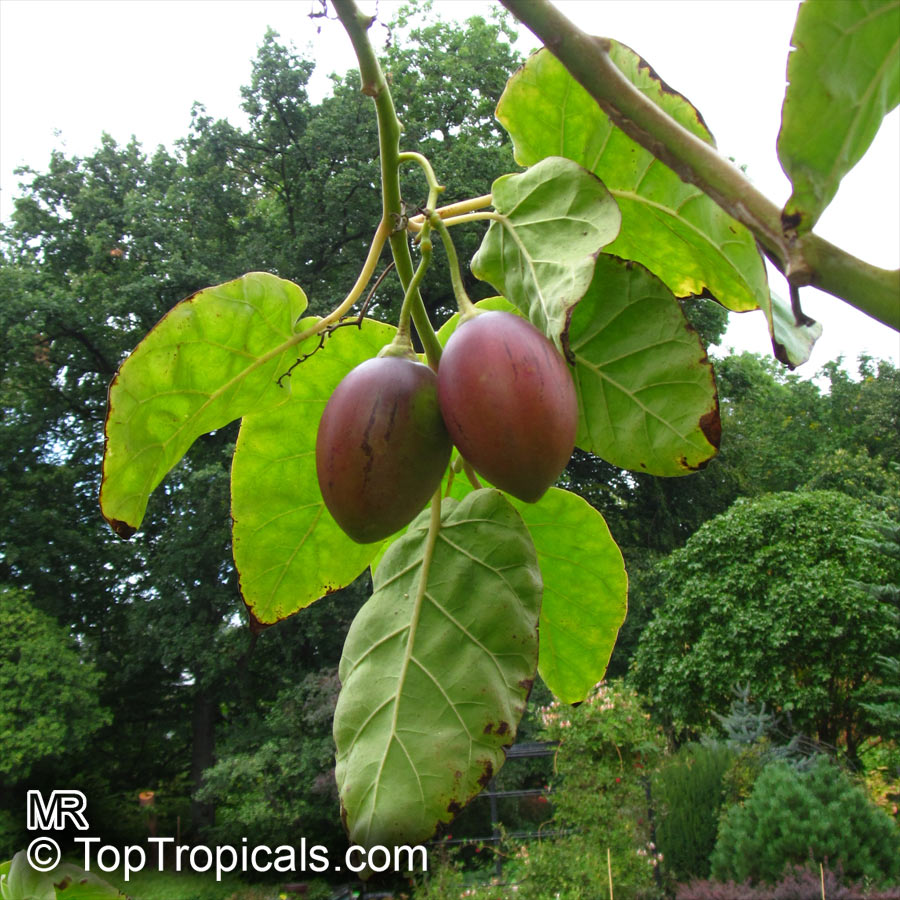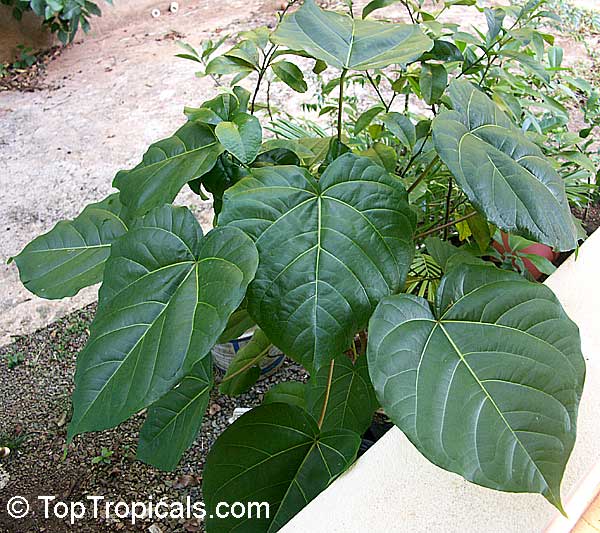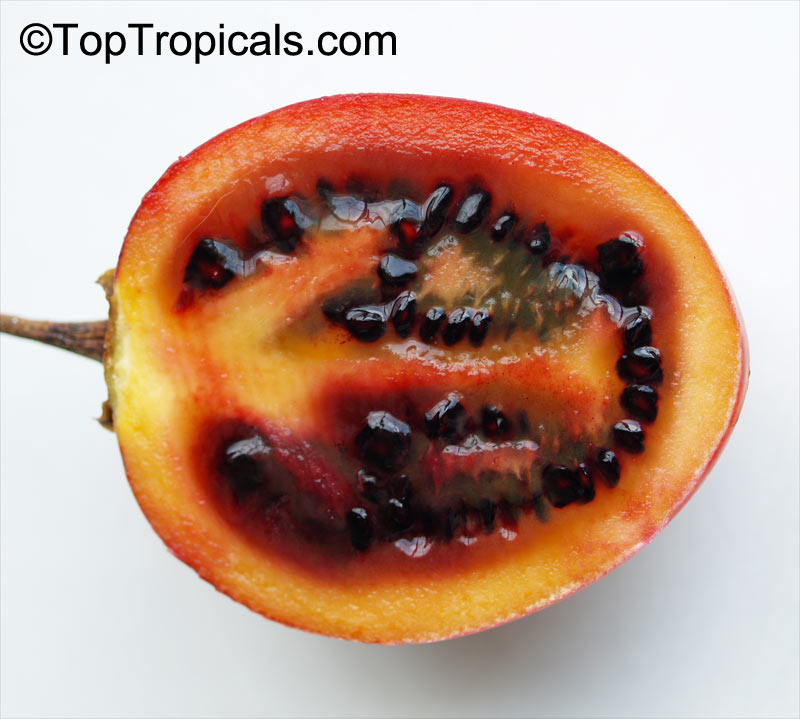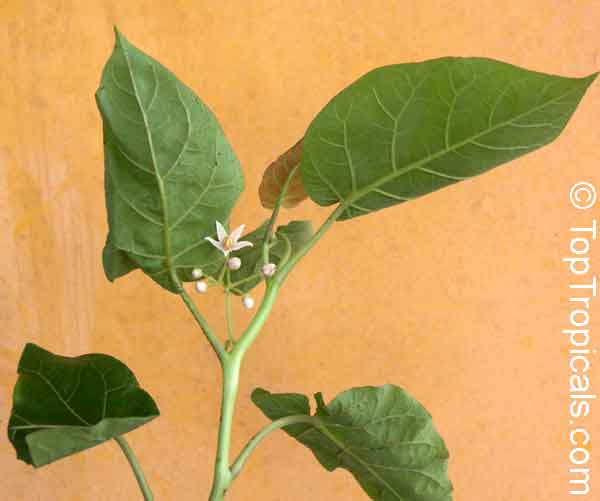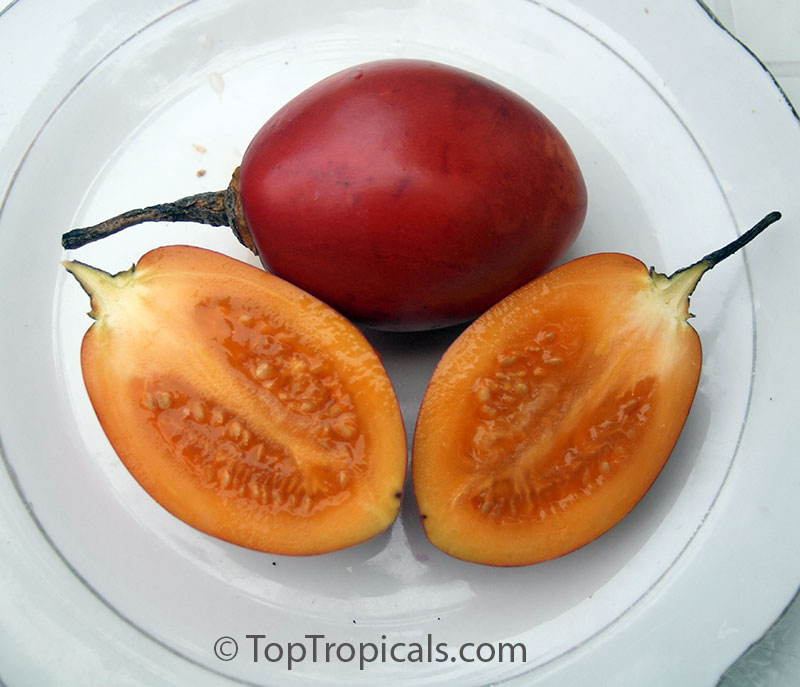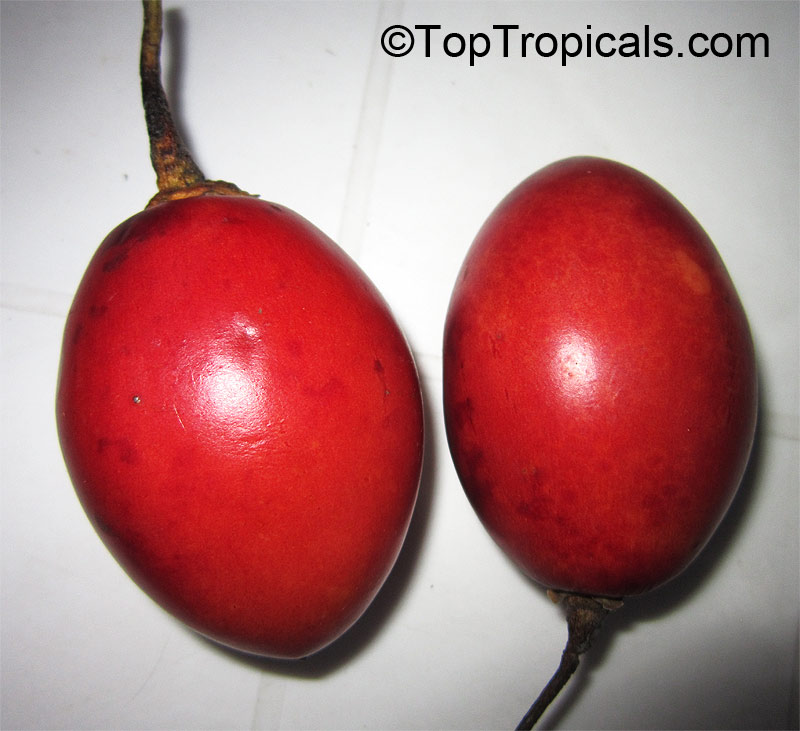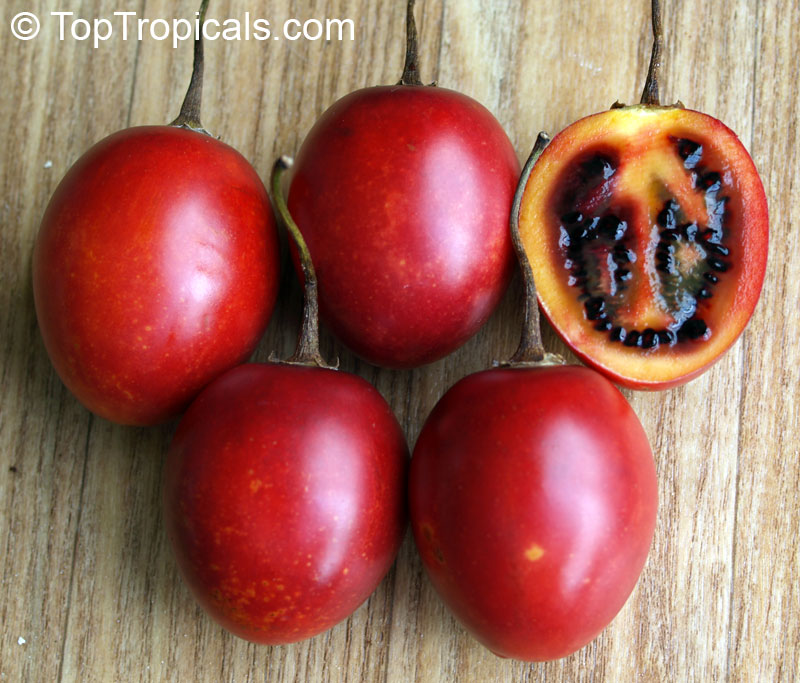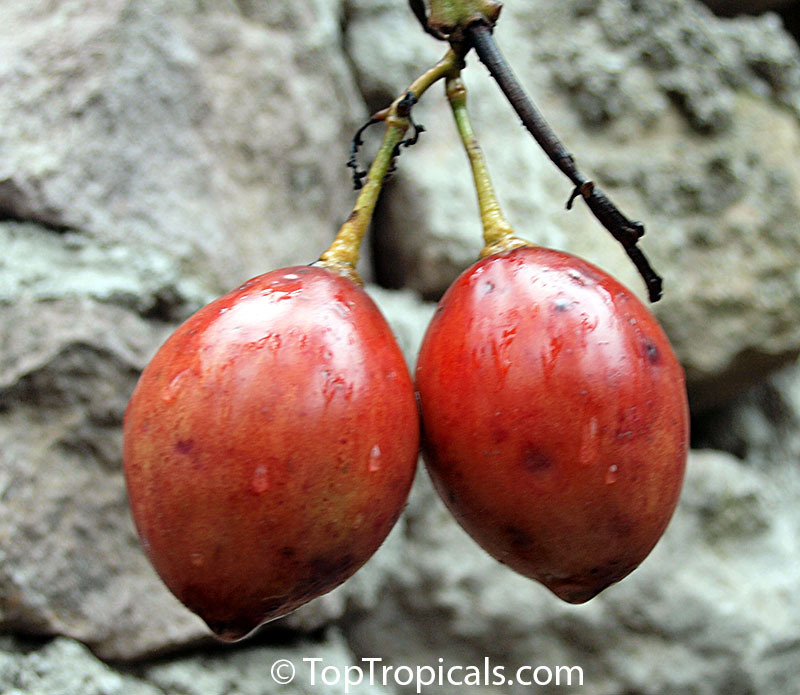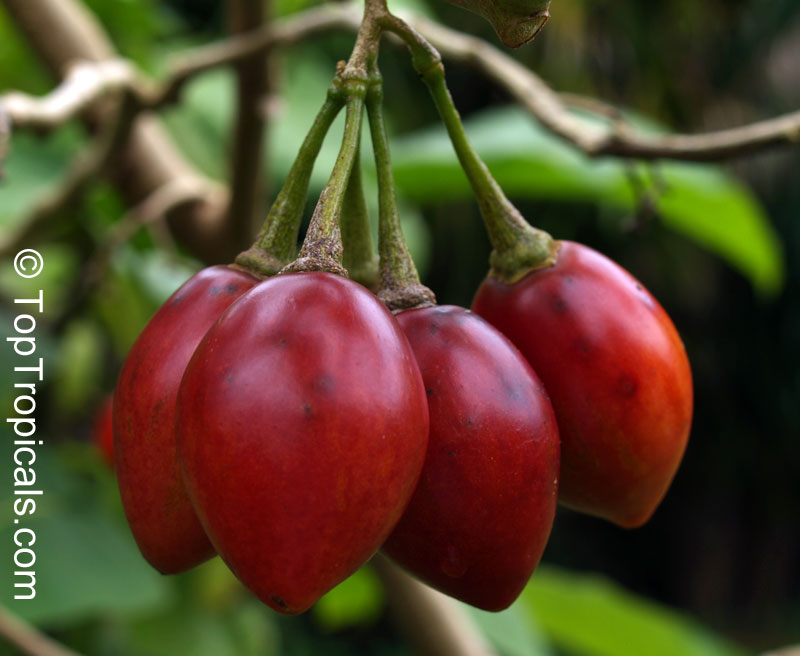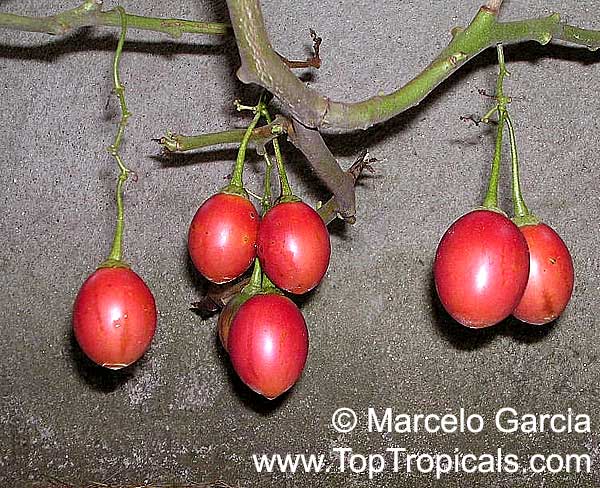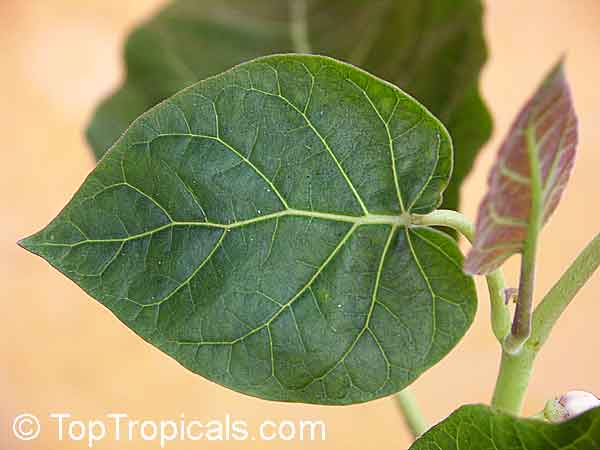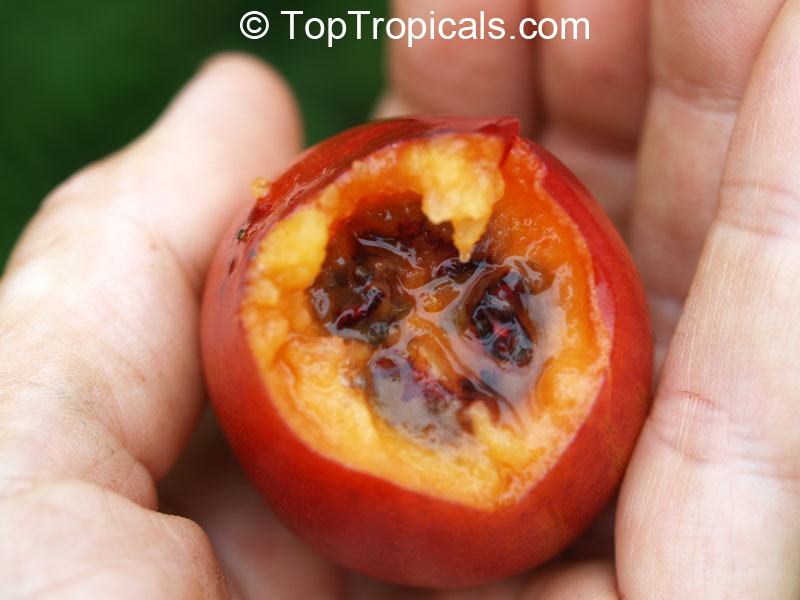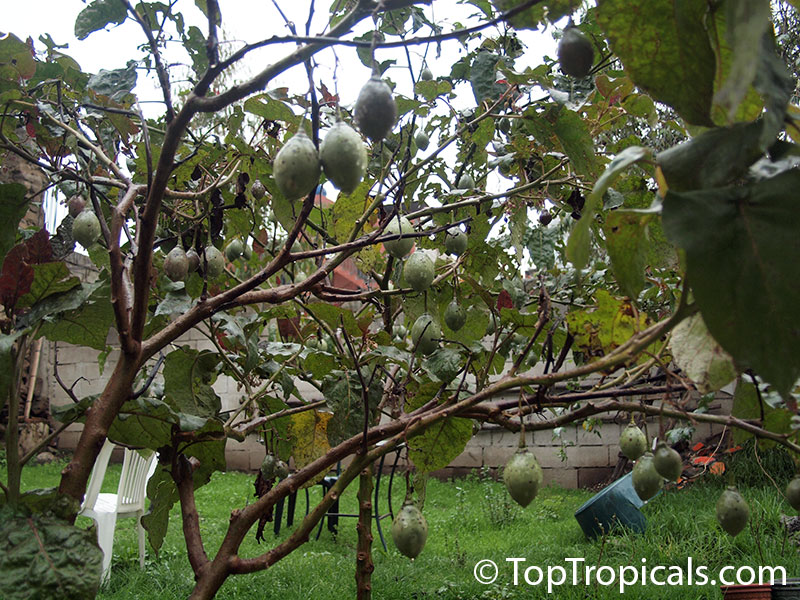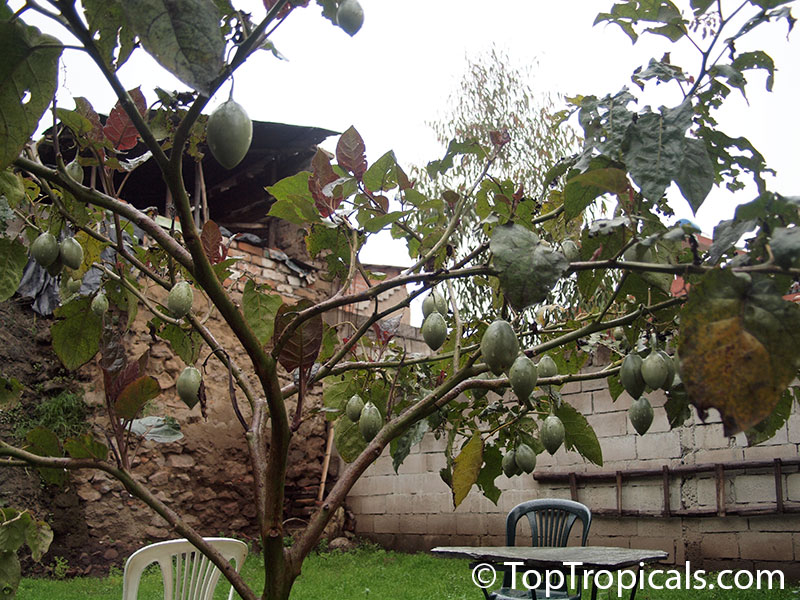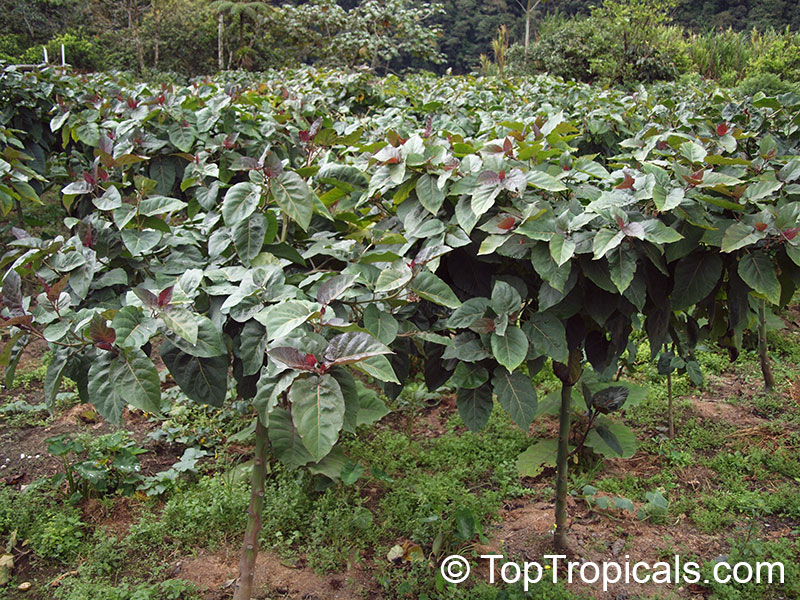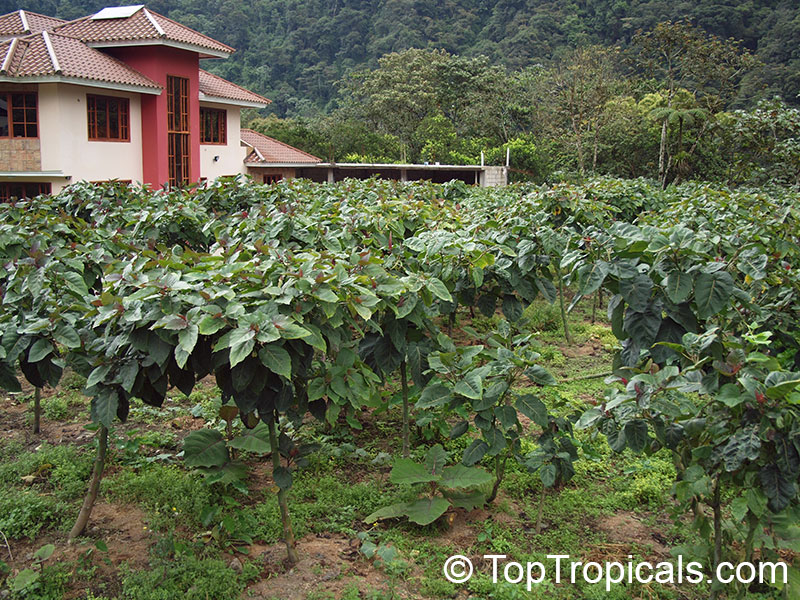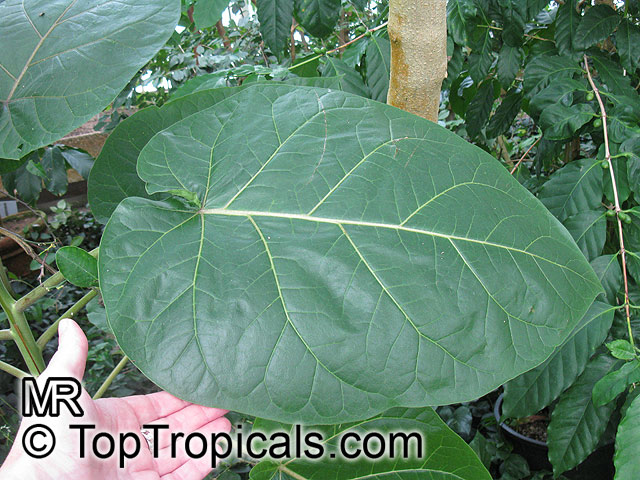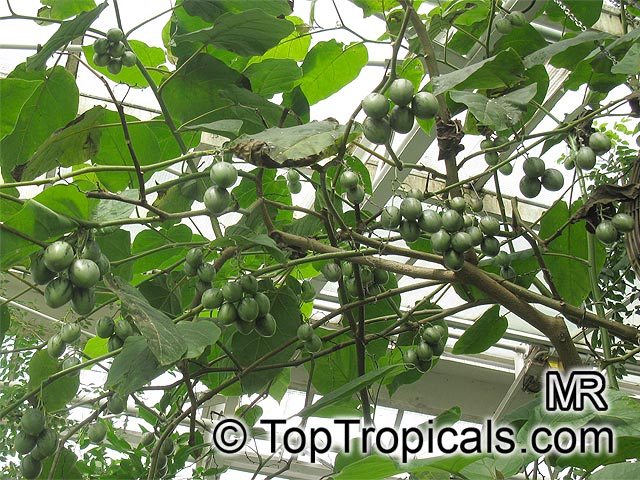Solanum betaceum (Tamarillo)
Top Tropicals Plant Encyclopedia
Botanical names: Solanum betaceum, Cyphomandra crassicaulis, Cyphomandra betacea, Pionandra betacea, Solanum crassifolium
Common names: Tamarillo, Tree Tomato, Tomate Arbol
Family: Solanaceae
Origin: Andes mountain of Peru






The Solanum betaceum, more commonly known as the Tamarillo, is a small tree of 10 to 20 feet that is native to the Andes mountain in Peru. This tree prefers semi-shade and requires the soil to remain moist. It produces white or off-white flowers that can be slightly irritating to the skin, though these give way to the edible fruits. A mature plant is cold hardy and can survive temperatures at least as low as the 30s Fahrenheit for a short time, and is suitable for USDA Grow Zones 9 to 11.
The ripe fruits of the Solanum betaceum can range from orange to red to purple, depending on the variety, and are similar in size and shape to a hen's egg. The flavor of the fruit can vary from tree to tree, but generally it is juicy and sub-acid, and often likened to the garden tomato. These fruits can be eaten raw or cooked, though they should have their seeds and skin removed before cooking. The unripe fruits are slightly toxic.
The Solanum betaceum tree can produce hundreds of fruits on one mature tree in the right conditions. These fruits are an excellent source of vitamins and minerals and offer a range of benefits to those who eat them, including improved eye health and a boost in energy. Eating tamarillos on a regular basis can also help to reduce the risk of heart disease, can boost the immune system, and can help to promote healthy skin.
When growing Solanum betaceum in cold regions, the plant should be kept in a pot and brought indoors during the winter months. This will help to keep it safe from the harsh winter temperatures and will ensure that the tree can survive until the following growing season.
Similar plants: Solanum betaceum (Tamarillo)
- Solanum aculeatissimum (Cockroach berry)
- Solanum atropurpureum (Malevolence)
- Solanum bahamense (Bahama Nightshade)
- Solanum bonariense (Granadillo)
- Solanum capsicastrum (Winter Cherry)
- Solanum conocarpum (Marron Bacoba)
- Solanum diphyllum (Twoleaf nightshade)
- Solanum dulcamara (Bittersweet Nightshade)
- Solanum elaeagnifolium (Silverleaf Nightshade)
- Solanum gilo (Scarlet Eggplant)
